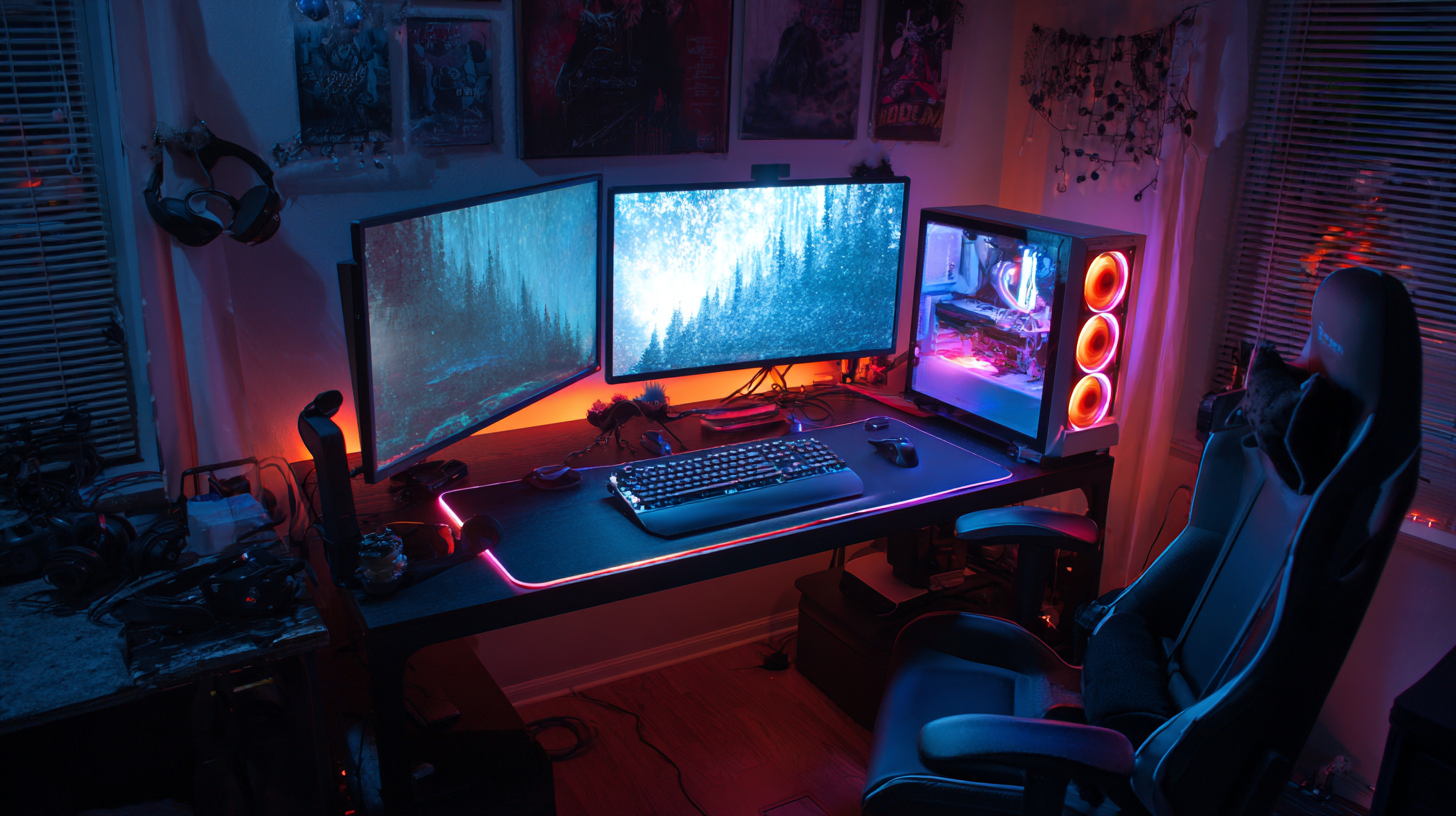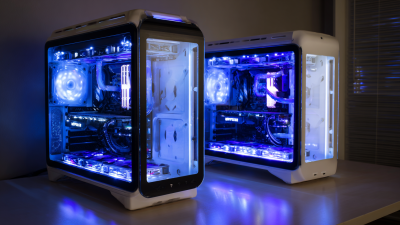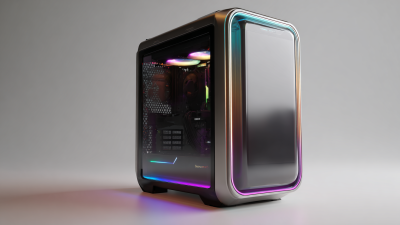Leave Your Message
- Phone
- E-mail
- Whatsapp


As the gaming industry continues to expand, with the global market projected to reach USD 256.97 billion by 2025 according to a report by Newzoo, the importance of selecting the right gaming monitor has never been more critical. A high-quality gaming monitor can significantly enhance your gaming experience, providing better visuals, faster response times, and more immersive gameplay. Research indicates that 95% of professional gamers prioritize a monitor's refresh rate and response time when making their choice, ensuring competitive performance in fast-paced environments.
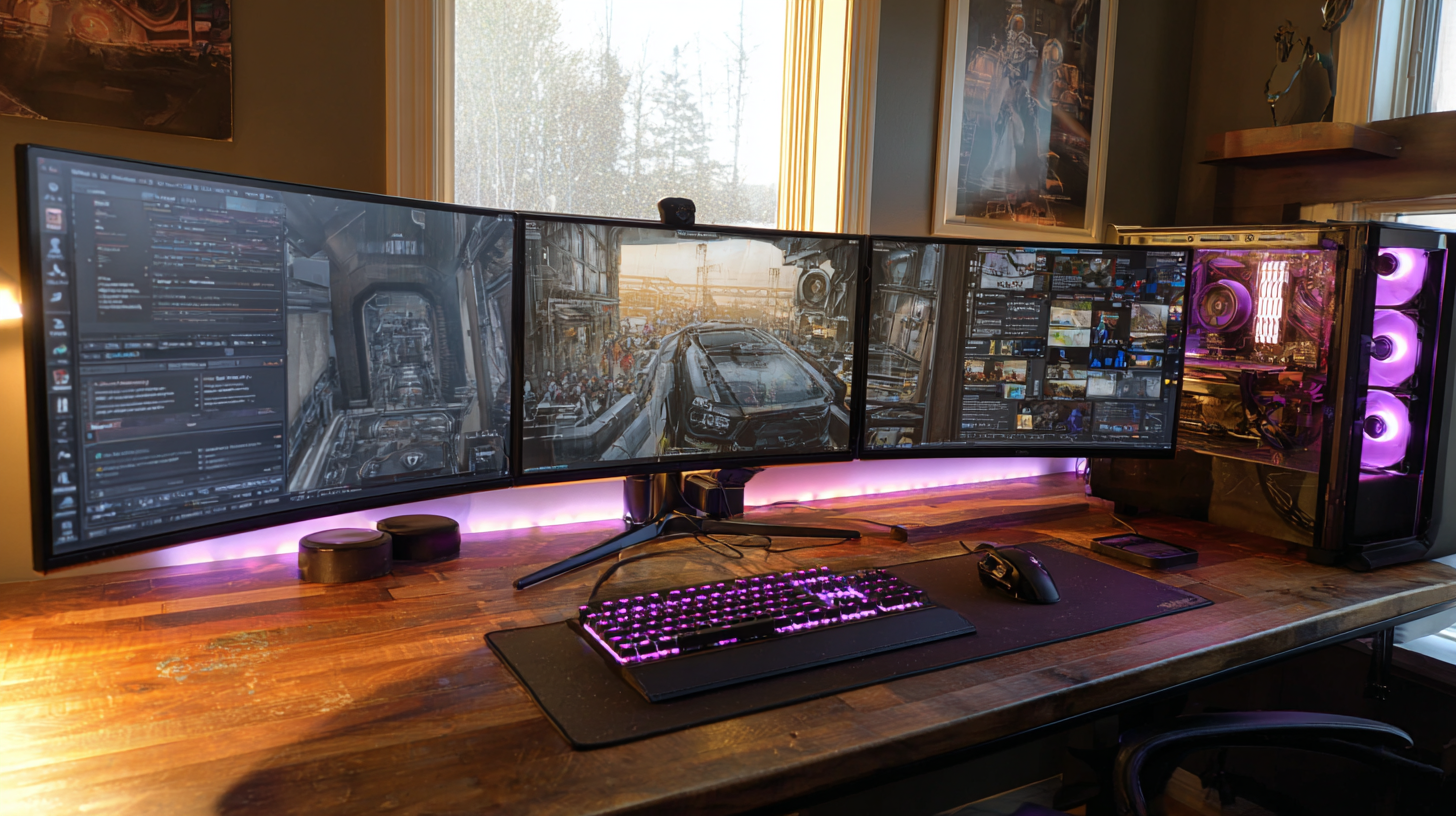
With an array of options available, from 4K Ultra HD displays to ultra-wide and high-refresh-rate monitors, selecting the perfect gaming monitor tailored to your specific setup is essential for both casual and serious gamers alike. This guide aims to equip you with the necessary knowledge to navigate this complex landscape and make an informed decision that elevates your gaming experience to new heights.
When it comes to choosing the perfect gaming monitor, understanding the different types of displays is crucial. Monitors come in various technologies, including FHD, QHD, and UHD. Each resolution offers different levels of detail and performance, making it essential to consider your gaming style and hardware capabilities. For instance, if you're focused on competitive gaming, a higher refresh rate and lower response time might be more important than resolution.
Additionally, monitor panel types play a significant role in your gaming experience. TN panels offer fast response times but limited viewing angles, while IPS panels provide vibrant colors and better viewing angles but may suffer in speed. VA panels offer deeper blacks and contrast, which can enhance your gaming experience in darker environments. OLED technology provides stunning visuals but can be more expensive.
**Tips:** Before making a decision, assess what types of games you play and the space available for your monitor setup. If you often enjoy sprawling landscapes in RPGs, consider an ultrawide monitor for expansive visuals. Conversely, if you prefer multitasking or have a variety of genres on your playlist, dual monitors can enhance productivity and immersion.
This chart illustrates the distribution of different types of gaming monitors based on their features and specifications. Understanding these categories can help you choose the perfect gaming monitor for your setup.
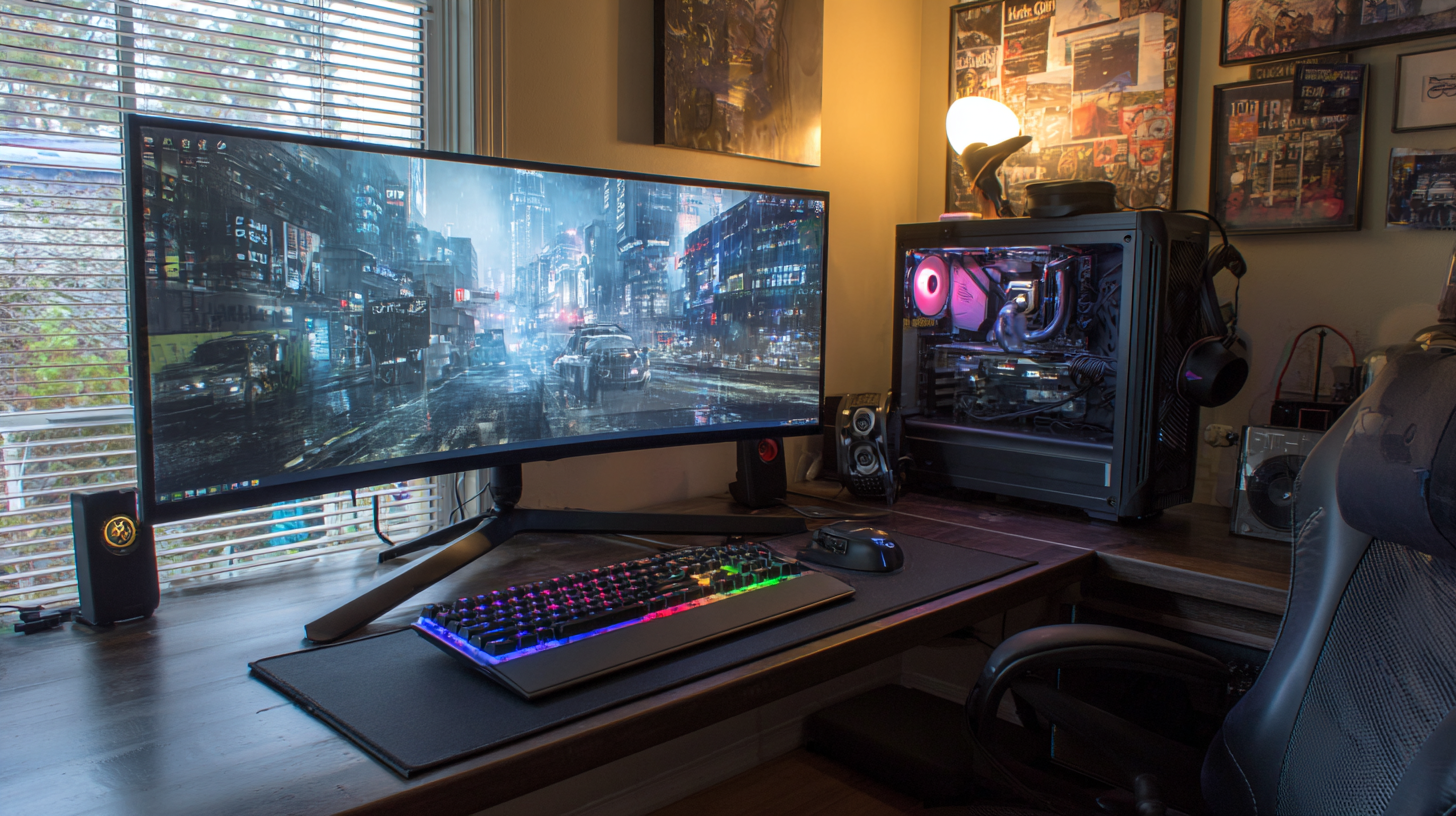 When selecting the perfect gaming monitor, it’s crucial to focus on key features such as resolution, refresh rate, and response time. Resolution refers to the number of pixels displayed on the screen; higher resolutions offer better clarity and detail, which can enhance immersion. For gaming, a resolution of 1080p (Full HD) is common, but if you want to future-proof your setup, consider monitors with 1440p (QHD) or even 4K capability.
When selecting the perfect gaming monitor, it’s crucial to focus on key features such as resolution, refresh rate, and response time. Resolution refers to the number of pixels displayed on the screen; higher resolutions offer better clarity and detail, which can enhance immersion. For gaming, a resolution of 1080p (Full HD) is common, but if you want to future-proof your setup, consider monitors with 1440p (QHD) or even 4K capability.
Refresh rate plays a significant role in providing smooth gameplay. Measured in Hertz (Hz), a higher refresh rate results in smoother visuals and reduced motion blur. While standard monitors typically offer 60Hz, gamers often prefer 144Hz or higher for competitive gaming. This increase can make a noticeable difference in fast-paced titles, giving you an edge over opponents.
Response time, which indicates how quickly a pixel can change from one color to another, is another vital aspect. A lower response time minimizes ghosting and blurring of images, particularly during quick movements. Look for monitors with a response time of 5ms or less for the best gaming experience.
Tips: When shopping for a gaming monitor, always check for features like G-Sync or FreeSync compatibility, as these technologies help eliminate screen tearing and enhance the overall gaming experience. Additionally, prioritize monitors with adjustable stands to ensure comfort during prolonged gaming sessions.
When it comes to choosing a gaming monitor, the panel type plays a crucial role in overall performance and user experience. The most popular panel technologies are TN, IPS, VA, and the emerging OLED.
TN panels are known for their fast response times, making them ideal for competitive gamers. However, they often sacrifice color accuracy and viewing angles. On the other hand, IPS panels excel in color reproduction and wider viewing angles, making them a favorite among content creators and casual gamers alike. According to industry reports, IPS panels are becoming more prevalent in high-refresh-rate monitors, appealing to a wider audience.
VA panels are touted for their deep contrast ratios and excellent black levels, which enhance immersion during darker scenes. However, they come with slower response times, which may not appeal to competitive gamers. OLED technology is rapidly gaining traction due to its self-emissive nature, allowing for true blacks and vibrant colors. Reports suggest that OLED monitors are expected to dominate the market by 2025, albeit at a higher price point.
Tips: When choosing between panel types, consider your primary use case. If competitive gaming is your focus, a TN panel or a high-refresh-rate IPS might be the right fit. For gamers who enjoy single-player experiences or media consumption, an OLED or VA panel may enhance visuals significantly. Always check for the monitor's refresh rate and response time to ensure optimal performance regardless of the panel you choose.
When choosing a gaming monitor, understanding essential connectivity options is crucial for maximizing your gaming experience. The latest industry reports indicate that over 70% of gamers prioritize high-refresh-rate monitors, making DisplayPort and HDMI 2.1 connectors highly sought after. DisplayPort 1.4 supports resolutions up to 8K at 60Hz or 4K at 120Hz, providing ample bandwidth for modern gaming hardware. On the other hand, HDMI 2.1 offers similar capabilities, allowing for features like variable refresh rates (VRR) and auto low-latency mode (ALLM), which are essential for a seamless gaming experience.
**Tips:** Ensure your graphics card supports these connections to fully utilize their potential. If you’re investing in a next-gen console, prioritize monitors with HDMI 2.1 to future-proof your setup.
In addition to video connections, consider the importance of USB ports for peripheral support. According to a 2023 survey by TechRadar, 60% of gamers consider USB-C and additional USB-A ports as critical features for connecting devices such as gaming headsets, webcams, and controllers. Models that incorporate these ports not only streamline your gaming environment but also enhance the overall functionality of your monitor.
**Tips:** Look for models with built-in USB hubs, which can reduce cable clutter and make it easier to manage your gaming setup.
| Model | Screen Size | Resolution | Refresh Rate | Response Time | Connectivity Options |
|---|---|---|---|---|---|
| Model A | 27 inches | 2560x1440 | 144 Hz | 1 ms | HDMI, DisplayPort, USB |
| Model B | 24 inches | 1920x1080 | 75 Hz | 5 ms | HDMI, VGA |
| Model C | 32 inches | 3840x2160 | 60 Hz | 4 ms | HDMI, DisplayPort, USB-C |
| Model D | 34 inches | 3440x1440 | 100 Hz | 2 ms | HDMI, DisplayPort |
When it comes to selecting a gaming monitor, budgeting plays a crucial role in ensuring you get the best quality for your investment. It's essential to find a balance between features, performance, and cost. Start by establishing a clear budget based on your gaming habits and the types of games you play. Higher refresh rates, lower response times, and advanced display technologies can significantly enhance your gaming experience, but they often come with a higher price tag. Determine what features are non-negotiable for you—such as a 144Hz refresh rate for fast-paced games or 4K resolution for stunning visuals—and prioritize those within your budget.
Additionally, don't overlook the importance of long-term value over initial cost. Investing in a slightly more expensive monitor that offers superior color accuracy and durability could save you money in the long run, as you may avoid the need for an early upgrade. Look for options that offer a good warranty and positive user reviews, as these can provide insights into the monitor's longevity. By carefully weighing the balance between quality and cost, you can make a well-informed decision that enhances your gaming setup without breaking the bank.
